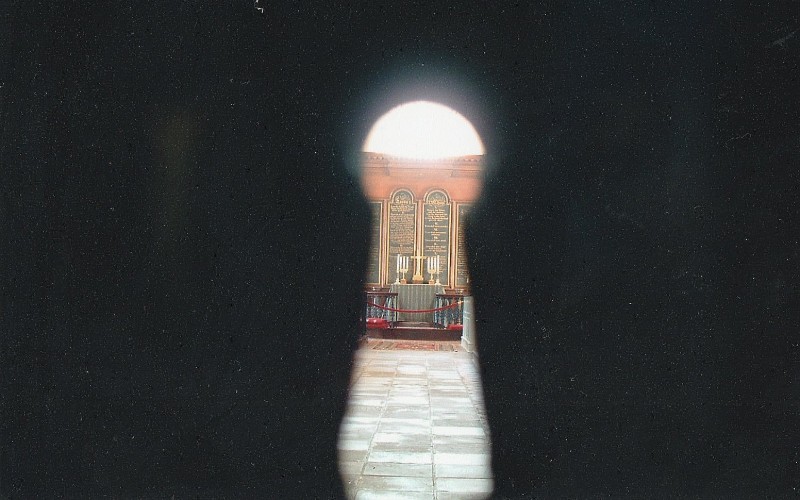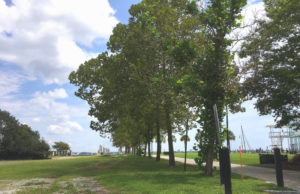
James Island reader Archie Burkel, a.k.a. The Hat Lady, submitted this as a Mystery Photo and, boy, is it ever clever. Hint: It was taken in Charleston County. But what is the viewer looking at and where is it? Send your guess about the location of this photo to feedback@statehousereport.com. And don’t forget to include your name and the town in which you live.
Our previous Mystery Photo
 It was a tough one. Only one reader — the indefatigable George Graf of Palmyra, Va. — correctly identified the Aug. 16 “big field” mystery as the piece of land on the Charleston peninsula where the International African American Museum will be built. At the right, you can see a slice of the Charleston Maritime Center. The angle of the shot obscures the USS Yorktown, which is across the river. You can, however, see some sailboat masts. Congrats, George!
It was a tough one. Only one reader — the indefatigable George Graf of Palmyra, Va. — correctly identified the Aug. 16 “big field” mystery as the piece of land on the Charleston peninsula where the International African American Museum will be built. At the right, you can see a slice of the Charleston Maritime Center. The angle of the shot obscures the USS Yorktown, which is across the river. You can, however, see some sailboat masts. Congrats, George!
Graf shared the significance of the land, according to greenvilleonline.com: “This serene site was once the epicenter of America’s ugliest enterprise. Nearly 250 years ago, this area was merely brackish marsh. Charleston merchant Christopher Gadsden converted it into the largest wharf in North America. It covered 840 feet from the Charleston Harbor to East Bay Street, between what are now Calhoun and Laurens Streets.
“Initially, Gadsden’s Wharf primarily serviced the rice industry. Eventually, it became a hub of the international slave trade. From 1783 to 1808, approximately 100,000 enslaved African men, women and children were forced into ships and carried on a voyage through darkness across the Atlantic Ocean into the Charleston Harbor.
“According to historian and former South Carolina Historical Society archivist Nic Butler, on Feb. 17, 1806, the City Council of Charleston passed an ordinance stipulating that all vessels importing enslaved Africans port in Gadsden’s Wharf. Enslaved Africans were stored like crops in a wharf warehouse. Shackled to despair, hundreds of men, women and children died from fevers or frostbite. They were buried unceremoniously in a nearby mass grave. Those who survived those subhuman conditions were advertised in newspapers, sold and dispersed.”
- Send us a mystery: If you have a photo that you believe will stump readers, send it along (but make sure to tell us what it is because it may stump us too!) Send to: feedback@statehousereport.com and mark it as a photo submission. Thanks.


